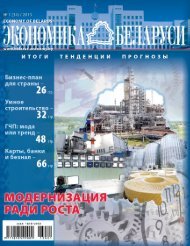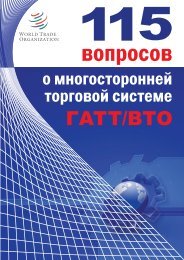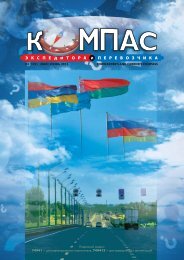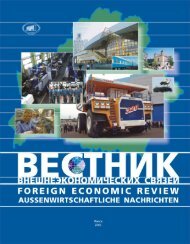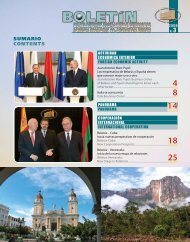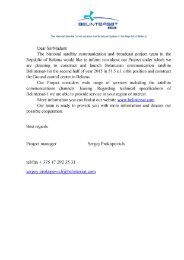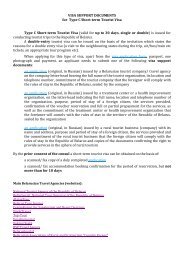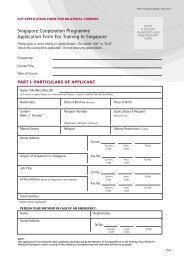FIGURE 2.6Emerging market economies have amassed large foreign exchange reservessince 1995ChinaJapanUnited StatesRussianFederationSaudi ArabiaIndiaKorea, Rep.BrazilSwitzerlandHong Kong,China (SAR)SingaporeGermanyThailandAlgeriaFranceItalyMexicoMalaysiaLibyaIndonesiaNote: Includes holdings of gold.Source: World Bank 2012a.0 500 1,000 1,500 2,000 2,500 3,000Foreign exchange reserves ($ billions)19952010final products, which are higher than those onNorth–South trade. 75In the aftermath of the 1997 Asian financialcrisis, several countries of the South developednew monetary arrangements, which are transformingthe financial architecture and creatingspace for countries to craft homegrownpolicies. The new lending arrangementsemphasize pragmatism over ideology andconditionality.In addition, the global financial architectureis being shaped by the rising South’s vastfinancial reserves. A number of countries,not just Brazil, China and India, but alsoIndonesia, the Republic of Korea, Malaysia,Mexico, Thailand and others have amassedpools of foreign exchange reserves as self-insuranceagainst future financial downturnsand crises (figure 2.6). Between 2000 and thethird quarter of 2011, global foreign exchangereserves rose from $1.9 trillion to $10.1 trillion,with a dominant share of the increaseaccumulated by emerging and developingcountries, whose reserves totalled $6.8 trillion.76 Some of these countries used theirreserves to stimulate growth in the aftermathof the 2008 global financial crisis. In a reversalof roles, these funds have been sought by theInternational Monetary Fund for assistancewith the financial crisis in Europe.Developing countries with large reserveholdings generally transfer part of these tosovereign wealth funds. According to data bythe Sovereign Wealth Fund Institute, thesefunds had an estimated $4.3 trillion in assetsat the end of 2010, with $3.5 trillion heldby developing and emerging economies and$800 billion in East Asia alone. 77 As of March2011, developing and emerging economiesheld 41 sovereign wealth funds, 10 with assetsof $100–$627 billion.Large foreign exchange reserves and sovereignwealth funds are not the most efficientinsurance against financial shocks. This unprecedentedaccumulation of foreign exchangehas opportunity costs both for the countriesholding the reserves and for other developingcountries. 78 The resources could be deployedin more productive ways to support the provisionof public goods, to provide capital toprojects that enhance productive capacitiesand economic and human development and58 | HUMAN DEVELOPMENT REPORT <strong>2013</strong>
to promote regional and subregional financialstability by increasing the resource pools ofregional institutions.Overall, the rise of the South is infusingnew patterns of resource accumulation intothe global financial system and building adenser, multilayered and more heterogeneousfinancial architecture for the South. Thesearrangements sometimes substitute for theBretton Woods institutions, but in most cases,the emerging institutions and arrangementscomplement the global financial architecture.The changing financial landscape in the Southhas the potential to promote financial stabilityand resilience, support the developmentof long-run productive capacities, advanceaims consistent with human developmentand expand national policy space. Moreover,emerging economies are having a transformativeeffect by pressing the Bretton Woodsinstitutions to respond to concerns aboutrepresentation, governance principles and theuse of conditionalities.The G20 has expanded its participation insuch key global financial governance institutionsas the Financial Stability Board, taskedwith ensuring greater accountability in institutionsthat set international financial standards.Likewise, all G20 countries, among others, arenow represented in the Basel Committee onBanking Supervision and the InternationalOrganization of Securities Commissions.The South is also gaining influence in theInternational Monetary Fund, where China hasfilled a newly created deputy managing directorpost and stands to become the third largestshareholder. 79 At the World Bank, the votingpower of developing and transition economiesrose 3.13 percentage points in 2010, reaching47.19%. 80Migration policyRegional organizations such as the Associationof Southeast Asian Nations, the African Unionand the Common Market of the South haveadded migration to their agendas. Some ofthis activity is through regional consultations,which are informal, nonbinding processes dedicatedto finding common ground among countries.Many of these processes are interregionaland straddle origin and destination regionsin ways intended to enable capacity building,technical standardization and agreements onissues such as readmissions. They have loweredbarriers to communication and provided avenue for countries to come together, understandeach other’s perspectives and identifycommon solutions.These dialogues can be credited with pavingthe way for subsequent successful effortson migration, most ambitiously the BerneInitiative 2001–2005, the 2006 High LevelDialogue on Migration and <strong>Development</strong>hosted by the UN General Assembly and thesubsequent creation of the Global Forum onMigration and <strong>Development</strong>. 81 As the 2009<strong>Human</strong> <strong>Development</strong> <strong>Report</strong> recommended,such efforts could improve outcomes formigrants and destination communities by liberalizingand simplifying channels that allowpeople to seek work abroad, ensuring basicrights for migrants, reducing transaction costsassociated with migration, enabling benefitsfrom internal mobility and making mobilityan integral part of national developmentstrategies. 82Environmental protectionThe UN Conference on Sustainable<strong>Development</strong> in Rio de Janeiro demonstratedthe promise of regional arrangements, as governmentsfrom the South showed how theyare coming together to manage the resourcesthey share. One initiative, negotiated by governmentsfrom the Asia–Pacific region, willprotect the Coral Triangle, the world’s richestcoral reef that stretches from Malaysia andIndonesia to the Solomon Islands and providesfood and livelihoods to more than 100 millionpeople. In the Congo River Basin, countriesare working together against the illegal timbertrade to conserve the world’s second largestrainforest. 83 At Rio+20, a group of regionaldevelopment banks announced a $175 billioninitiative to promote public transportationand bicycle lanes in some of the world’s largestcities. 84The rise of the South is also reflected inan array of bilateral arrangements to tackleclimate change. With climate-related naturaldisasters and rising sea levels threatening toundermine human development progress,With climate-relatednatural disastersand rising sea levelsthreatening to underminehuman developmentprogress, countriesrecognize that theyhave little choice butto formulate policieson adapting to climatechange now andmitigating climatechange for the futureChapter 2 A more global South | 59
- Page 1 and 2:
WNSEHuman DevelopmentReport 2013The
- Page 3 and 4:
Human Development Report 2013The Ri
- Page 5 and 6:
Human Development Report 2013 TeamD
- Page 7 and 8:
Finally, the Report also calls for
- Page 9 and 10:
Heather Simpson, Ben Slay, Mounir T
- Page 11 and 12:
3.6 India’s Supreme Court issues
- Page 13 and 14:
OverviewOne of the most heartening
- Page 15 and 16:
and sustainability are fully incorp
- Page 17 and 18:
Without investment in people, retur
- Page 19 and 20: opportunity to reap the full benefi
- Page 21 and 22: Woods institutions, the United Nati
- Page 23 and 24: IntroductionWhen developed economie
- Page 25 and 26: leading economies—Brazil, China a
- Page 27 and 28: comparable access to information, e
- Page 29 and 30: mobile phones: cellular banking is
- Page 32 and 33: “The political problem ofmankind
- Page 34 and 35: BOX 1.1Fairness, macroeconomics and
- Page 36 and 37: BOX 1.3Amartya Sen, Nobel Laureate
- Page 38 and 39: FIGURE 1.1Income per capita is risi
- Page 40 and 41: BOX 1.4Subjective indicators of wel
- Page 42 and 43: FIGURE 1.4There is notable variatio
- Page 44 and 45: FIGURE 1.6Most regions show declini
- Page 46 and 47: Progress in humandevelopment achiev
- Page 48 and 49: BOX 1.7Social competencies: human d
- Page 50 and 51: TABLE 1.3Inequality and satisfactio
- Page 52 and 53: Not all countries havethe precondit
- Page 54 and 55: “When the music changes,so does t
- Page 56 and 57: BOX 2.1The South’s integration wi
- Page 58 and 59: FIGURE 2.1As a share of world merch
- Page 60 and 61: BOX 2.2Acquisitions by the South of
- Page 62 and 63: FIGURE 2.3Between 2000 and 2010, In
- Page 64 and 65: FIGURE 2.4Export earnings per capit
- Page 66 and 67: BOX 2.6Final assembly is about more
- Page 68 and 69: Instead of having a centreof indust
- Page 72 and 73: Developing countriestrade more amon
- Page 74 and 75: “We cannot expect thatall nations
- Page 76 and 77: TABLE 3.1Selected developing countr
- Page 78 and 79: A common featureof countries thatha
- Page 80 and 81: More important thangetting prices r
- Page 82 and 83: BOX 3.5Eastern Europe and Central A
- Page 84 and 85: States have to beconscious that the
- Page 86 and 87: As countries develop,they tend to d
- Page 88 and 89: Having weathered theAsian financial
- Page 90 and 91: Providing publicservices that contr
- Page 92 and 93: Advancing health requiresmore than
- Page 94 and 95: Universal public healthand educatio
- Page 96 and 97: • China. The Minimum Livelihood G
- Page 98 and 99: “Each generation will reap whatth
- Page 100 and 101: concerns will make for a complex en
- Page 102 and 103: A greater emphasison education cans
- Page 104 and 105: FIGURE 4.1Under the fast track scen
- Page 106 and 107: Around the worldpeople are calling
- Page 108 and 109: FIGURE 4.4Different environmental s
- Page 110 and 111: FIGURE 4.5Education policies can al
- Page 112 and 113: BOX 4.2China and Ghana: who benefit
- Page 114 and 115: FIGURE 4.8countries thus converge t
- Page 116 and 117: “Let us join hands to try tocreat
- Page 118 and 119: Areas of globalinternational concer
- Page 120 and 121:
Addressing climatechange requires t
- Page 122 and 123:
International governanceis increasi
- Page 124 and 125:
BOX 5.2Jo Leinen, Member of the Eur
- Page 126 and 127:
facilitates reserve investments and
- Page 128 and 129:
Responsible sovereigntytakes the lo
- Page 130 and 131:
FIGURE 5.1Under the accelerated pro
- Page 132 and 133:
Good policymakingrequires greater f
- Page 134 and 135:
A fair and less unequalworld requir
- Page 137 and 138:
NotesOverview1 Atsmon and others 20
- Page 139 and 140:
25 Blinder 2006.26 UNIDO 2009.27 UN
- Page 141 and 142:
which is 61.7 deaths per 1,000 live
- Page 143 and 144:
ReferencesAbdurazakov, A., A. Minsa
- Page 145 and 146:
urban_world_cities_and_the_rise_of_
- Page 147 and 148:
Kamau, P., D. McCormick, and N. Pin
- Page 149 and 150:
Labor Administration. Geneva: Inter
- Page 151 and 152:
Human Development Report 2013The Ri
- Page 153 and 154:
Statistical acknowledgementsThe Rep
- Page 155 and 156:
Key to HDI countries and ranks, 201
- Page 157 and 158:
Human Development Report 2013The Ri
- Page 159 and 160:
Human Development Report 2013The Ri
- Page 161 and 162:
Human Development Report 2013The Ri
- Page 163 and 164:
Human Development Report 2013The Ri
- Page 165 and 166:
Human Development Report 2013The Ri
- Page 167 and 168:
Human Development Report 2013The Ri
- Page 169 and 170:
Human Development Report 2013The Ri
- Page 171 and 172:
Human Development Report 2013The Ri
- Page 173 and 174:
Human Development Report 2013The Ri
- Page 175 and 176:
Human Development Report 2013The Ri
- Page 177 and 178:
Human Development Report 2013The Ri
- Page 179 and 180:
Human Development Report 2013The Ri
- Page 181 and 182:
Human Development Report 2013The Ri
- Page 183 and 184:
Human Development Report 2013The Ri
- Page 185 and 186:
Human Development Report 2013The Ri
- Page 187 and 188:
Human Development Report 2013The Ri
- Page 189 and 190:
Human Development Report 2013The Ri
- Page 191 and 192:
Human Development Report 2013The Ri
- Page 193 and 194:
Human Development Report 2013The Ri
- Page 195 and 196:
Human Development Report 2013The Ri
- Page 197 and 198:
Human Development Report 2013The Ri
- Page 199 and 200:
Human Development Report 2013The Ri
- Page 201 and 202:
Human Development Report 2013The Ri
- Page 203 and 204:
Human Development Report 2013The Ri
- Page 205 and 206:
Human Development Report 2013The Ri
- Page 207 and 208:
Human Development Report 2013The Ri
- Page 209 and 210:
Human Development Report 2013The Ri
- Page 211 and 212:
Statistical referencesADB (Asian De
- Page 213 and 214:
Core features of the model pertinen
- Page 215 and 216:
Countries and HDI ranks in 2012 and



